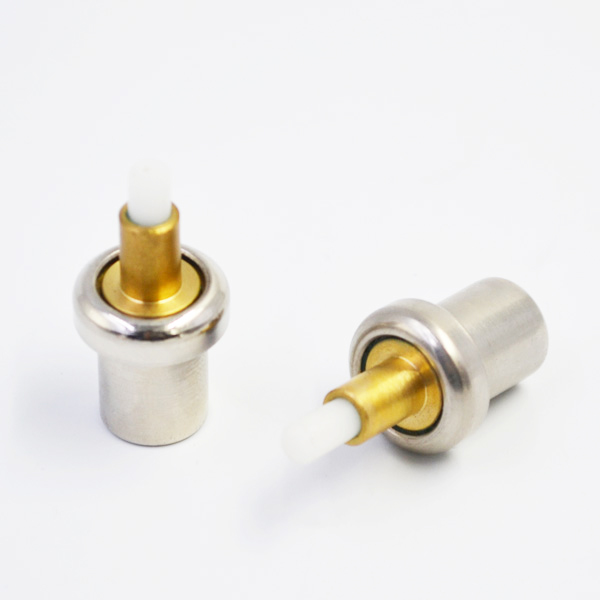Load identification is a detection technology of safe power consumption in power management system. In order to alleviate the labor of managers, this paper presents a controller for identifying user’s load type. The hardware circuit and software system of this controller are introduced systematically. Through practical testing, it is found that this controller can identify illegal appliances and limit some power or load of users according to control parameters. The use of the type has the characteristics of stable work and high cost performance. In the early stage, most of the civil electric load types were resistive loads, such as incandescent lamps, electric furnaces, electric heating pans, etc.
In the later stage, with the development of power electronics technology, more and more non-linear loads, such as switching power supply, computers, chargers, etc. However, because of the high-power resistive load is very prone to failure, short-circuit accidents caused by fire, so many enterprises and institutions, student apartments, hotels and other places will be some resistive load as illegal electrical appliances and restricted use. And checking this kind of electrical appliances is a heavy workload of power managers, so the design of a controller that can identify illegal appliances can reduce the workload of power managers, prevent users from using illegal appliances, effectively prevent fires, and ensure the safety of users’lives and property. Load identification should be realized from two aspects: first, it has the hardware conditions to detect the load parameters, and second, it needs to run accurate software algorithms, so that the load type can be identified accurately and reliably. Then the structure of load identification controller includes microcontroller (or microprocessor), current detection circuit, voltage detection circuit, A/D conversion circuit, phase difference detection circuit and control output circuit.
Detection of load current and voltage is the basis of analysis of load types. By running some algorithms, load types can be accurately analyzed, such as discrete Fourier transform (DFT), harmonic analysis and wavelet analysis, which are more accurate and reliable than traditional power factor method, instantaneous power increase method and waveform comparison method, and have strong anti-cracking potential. Force, the load identification controller introduced in this paper is based on the hardware conditions described above, and the wavelet analysis method is used to analyze, which makes the controller have strong recognition ability and anti-cracking ability. The hardware circuit mainly includes the minimum system of microcontroller, voltage and current detection circuit, A/D conversion circuit and control output circuit. In order to better realize human-computer interaction, key circuit and RS232 communication circuit are added.

The following is an introduction to the more important hardware circuits.

Because the minimum system of microcontroller needs to run the wavelet analysis algorithm, it inevitably involves complex floating-point operation. In order to ensure the real-time performance of the system, it is necessary to select a powerful peripheral rich microcontroller. If the amount of calculation is large, the microcontroller may need to be demonstrated by using digital signal processor (DSP). Therefore, this design is designed to save costs and improve cost-effectiveness, and choose STM32F407 microprocessor of Italian Semiconductor Company, which has a strong performance (ARM Cortex-M4 architecture), in order to enhance the performance. Floating point operation function, internal also has floating point operation unit (FPU), in the case of opening FPU, the performance of floating point operation is greatly improved, and with the support of the DSP Library in STM32 library function, the performance is particularly outstanding. Current and voltage detection circuit current detection circuit is mainly composed of current transformer, amplifier and filter circuit. Current transformer based on transformer principle can effectively isolate and measure the large current at the primary side.
However, because the output signal is weak, it needs amplification circuit processed by the amplifier, and then pass the low-frequency signal filter. The two order filter, cut-off frequency 25Hz) is sent to the A/D conversion circuit after filtering. Although the voltage detection circuit is based on the principle of resistance divider, it is not as effective as that of the transformer to isolate the large capacity alternating current on the primary side. However, it has the advantages of pure resistance load, no change in the phase of the output signal, simple circuit and low cost. Similarly, the voltage detection signal is filtered into the A/D conversion circuit. In order to get the load waveform more accurately, the A/D conversion circuit is the basis for analyzing the waveform. This design uses the excellent performance of TI’s (TI) A/D converter ADC16DX370, ADC16DX370 is a 16 bit dual channel high-performance A/D converter, which can convert analog signals to 16 bit digital signals at 370MSPS sampling rate, especially the internal input buffer is eliminated, thermostatic element and the internal switched capacitor is eliminated. The charge feedback noise of the sample circuit increases the low noise voltage reference and greatly simplifies the complexity of circuit design. In signal analysis, Fourier analysis method has great advantages, especially in the process of time domain signal analysis, using fast Fourier transform (FFT) and discrete Fourier transform (DFT) has high accuracy and real-time, while Fourier analysis method can not accurately analyze the waveforms of windowed function, even the two waveforms are very different in a certain time domain and have a specific view. During the inspection period, the results of Fourier analysis are consistent. In contrast, wavelet analysis is a layer-by-layer separation of waveform signals for analysis, which has strong adaptability and analysis performance, known as “mathematical microscope”. Among them, _(t) is a wavelet basis. If there are infinite groups of wavelet bases, then there can be infinite groups of wavelet functions. So different wavelet bases will have different analysis results. There are many kinds of wavelet functions in wavelet analysis, such as Haar wavelet, Daubechies (dbN) wavelet, Morlet wavelet, Meyer wavelet, etc. In this design, in order to ensure that the wavelet analysis has better support characteristics in the frequency domain and to facilitate the design of filters, Meyer wavelet is selected to facilitate transplantation into microcontrollers for operation, and discrete Meyer wavelet is used for small operation. Wave, namely DMeyer wavelet. Due to the use of wavelet analysis, the voltage detection signal becomes dispensable.
However, because of the need to monitor and control other parameters of the load, voltage detection is retained as user reference data.

Current detection uses transformer for acquisition and processing through amplification circuit and filter circuit.
Thus, through the calculation of phase difference, the phase difference is about 2.045 degrees, so compensation measures must be taken. In this design, phase compensation algorithm is added to the software, and compensation by real-time detection can reach the standard of 0.
2 level. Before using STM32F407 microcontroller to run DMeyer wavelet analysis, it is still necessary to demonstrate the parameters of DMeyer wavelet by using MATLAB, such as the settings of wavelet hierarchy, and then select a suitable parameter for transplantation. In this design, the energy of five-layer wavelet is analyzed, and the effect is better. However, with the improvement of the current electricity-limiting device on the market, it is more difficult to identify, so it is still necessary to demonstrate and experiment the decomposition layer of the wavelet to achieve the purpose of accurate identification.
